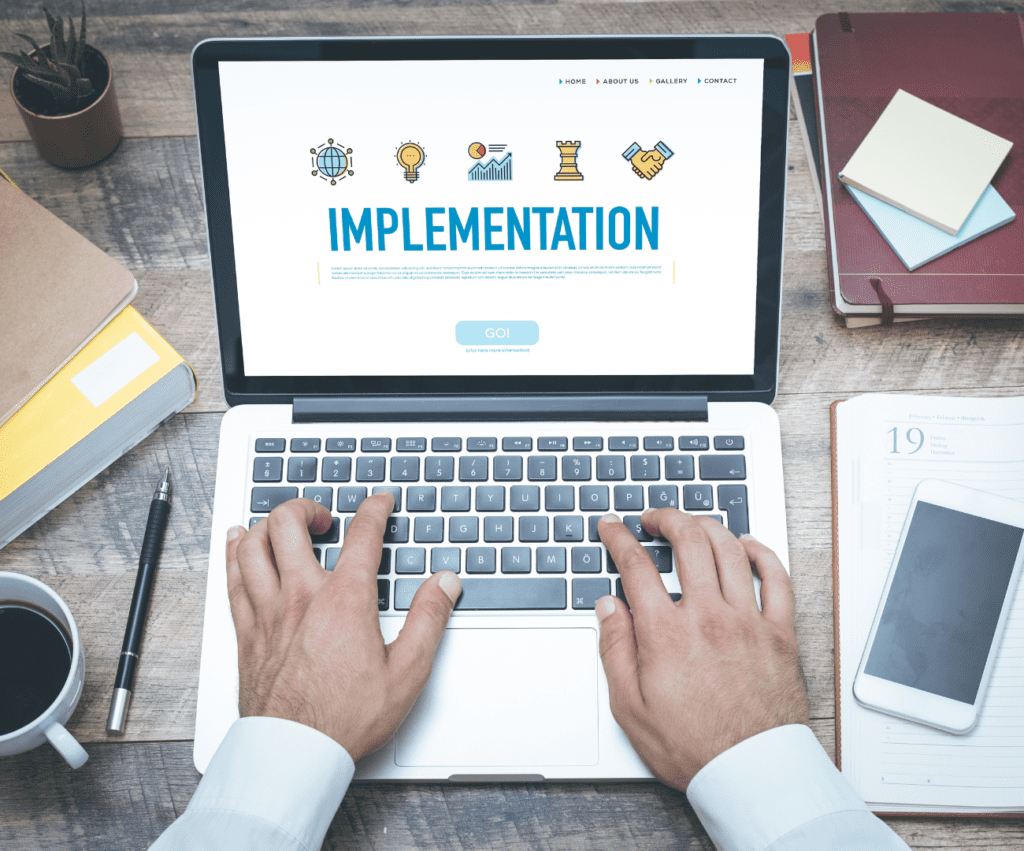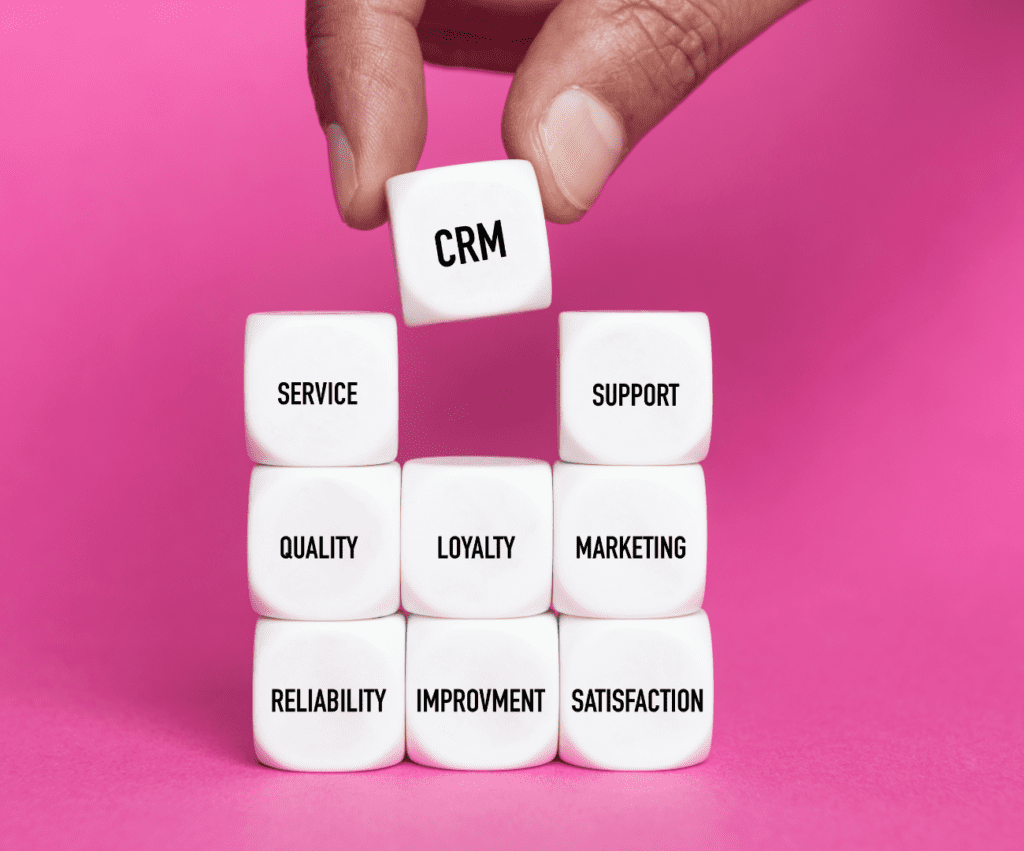Crafting the Perfect CRM Implementation Plan in 7 Essential Steps
There’s a hairline difference between a successful CRM implementation plan and one that could potentially lead to garnering average results.
Back in the 90s, the overall trend of CRM software tools with or without the help of crm implementation roadmap was still in its infancy.
However, 10 years later, companies, such as Siebel Systems and Salesforce established a very strong foothold in the market as the go-to reference for anyone looking to use a reliable CRM platform.
Since then, there have been numerous accounts of companies achieving success with the help of a properly integrated process of crm implementation.
So, much so that these days, the stats suggest promising prospects for anyone looking to leverage their business with the help of a crm implementation roadmap.
Here’s what you need to know.
- According to Salesforce, 70% of customers now anticipate a seamless experience across all channels, underscoring the importance of CRM systems in delivering consistent customer satisfaction.
- In 2021, revenue from CRM software reached $48.7 billion, and Grand View Research projects a compound annual growth rate (CAGR) of 14.2% from 2021 to 2028.
- Tech. co predicts that by 2023, approximately 81% of organizations will be leveraging AI-powered CRM systems to enhance customer interactions.
- Implementing CRM systems has yielded significant benefits for companies, including a 17% increase in lead conversions, a 16% rise in customer retention, and a 21% improvement in agent productivity, as reported by WebFX.
We have a detailed guide on CRM implementation steps where we’ll talk about the overall process of crm implementation and how to get the most out of a CRM tool from a business scalability perspective.
Read on…
What Is a CRM Implementation Plan?

A CRM implementation plan refers to the strategic roadmap that outlines the process of adopting and integrating a Customer Relationship Management (CRM) system within an organization.
It involves careful planning, coordination, and execution to ensure a successful implementation and maximize the system’s effectiveness. Here are some key arguments explaining the importance of having a well-defined CRM implementation plan:
Increased Efficiency:
CRM implementation steps help to streamline business processes, automate repetitive tasks, and centralize customer data.
Furthermore, efficiency leads to increased operational workflow level results, as employees can access relevant customer information quickly, collaborate effectively, and provide personalized experiences to customers.
Improved Customer Experience:
By implementing a CRM system, organizations can gather and analyze customer data, enabling them to gain valuable insights into customer preferences, behaviors, and needs.
This information allows businesses to tailor their products, services, and interactions to meet customer expectations, resulting in improved customer satisfaction and loyalty.
Enhanced Sales and Marketing Effectiveness:
CRM systems provide sales and marketing teams with tools to manage leads, track customer interactions, and measure campaign effectiveness.
With a well-implemented CRM system, organizations can optimize their sales and marketing strategies, identify upselling or cross-selling opportunities, and target customers with personalized messages, ultimately driving revenue growth.
Better Decision-Making:
A CRM implementation plan facilitates data-driven decision-making by providing real-time visibility into sales pipelines, customer trends, and performance metrics.
Managers and executives can access comprehensive reports and analytics, enabling them to make informed decisions, identify areas for improvement, and allocate resources effectively.
Scalability and Adaptability:
A CRM implementation plan ensures that the system is scalable and adaptable to accommodate future business growth and changing needs.
By considering factors such as customization requirements, data integration, and user training during the implementation process, organizations can build a flexible CRM foundation that can evolve with their evolving business requirements.
Employee Adoption and Engagement:
A well-planned CRM implementation includes comprehensive user training, change management strategies, and ongoing support.
This fosters employee adoption and engagement, as they understand the benefits of the system, gain confidence in using it, and see how it positively impacts their work efficiency and effectiveness.
Competitive Advantage:
Implementing a CRM system with a solid implementation plan gives organizations a competitive edge.
They can leverage the system’s capabilities to deliver personalized experiences, improve customer satisfaction, and stay ahead of competitors who may not have implemented a similar solution.
7 Essential Steps for Successful CRM Implementation

Following the aforementioned information, it is time to know the basics of crm implementation steps.
Don’t forget that these steps are written from a general perspective, as the nature and niche of your business will demand a slight curve, or change in the existing steps.
For best results, feel free to make adjustments as you see fit, but we strongly recommend following the process of crm implementation in a step-by-step format.
Changing the order of the steps, or prioritizing/ de-prioritizing the steps may impact the overall results in the end.
- Assess the CRM needs and set goals:
The first step is to assess the specific needs of your organization and define clear goals for implementing a CRM system. Identify the pain points, challenges, and areas where CRM can add value.
Determine the specific objectives you want to achieve, such as improving customer service, increasing sales, or streamlining internal processes.
- Choose the correct CRM application:
Once you have identified your needs and goals, research and evaluate different CRM applications available in the market. Consider factors such as features, scalability, customization options, ease of use, integration capabilities, and cost.
Select a CRM application that aligns with your organization’s requirements and has a proven track record of success.
- Build an implementation team:
Form a dedicated implementation team consisting of individuals from different departments or functional areas within your organization.
This team should include representatives from sales, marketing, customer service, IT, and any other relevant departments. Assign clear roles and responsibilities to each team member, ensuring they have the necessary skills and expertise.
- Create a change management plan:
Implementing a CRM system often brings about significant changes in processes and workflows.
Develop a comprehensive change management plan to address potential resistance to change and ensure smooth adoption. Communicate the benefits of CRM to employees, provide training and support, and address any concerns or questions they may have. Involve employees in the decision-making process to gain their buy-in and cooperation.
- Plan your CRM implementation budget:
Determine the budget required for CRM implementation, considering factors such as software licenses, hardware infrastructure, data migration, customization, training, and ongoing support.
Ensure that the budget is aligned with your organization’s financial capabilities and the expected return on investment from implementing CRM.
- CRM Implementation:
Once the initial groundwork is complete, proceed with the actual CRM implementation process.
This involves configuring the CRM application to meet your organization’s specific requirements, importing existing customer data, setting up user access and permissions, and integrating the CRM system with other relevant software or systems.
Ensure that the implementation is done in stages or phases to manage risks and facilitate smoother adoption.
- Prep for Go-live:
Before launching the CRM system, thoroughly test its functionality and compatibility with your organization’s processes.
Conduct user acceptance testing to identify and resolve any issues or bugs. Train employees on how to use the CRM system effectively and provide them with the necessary resources and support.
Prepare the necessary documentation, such as user manuals or guides, to assist users during the transition.
Continuous Implementation Is Part of the Overall Process of CRM Implementation | Here’s Why
Once the CRM system is live, regularly evaluate its performance, user adoption, and alignment with the set goals. Gather feedback from employees and stakeholders to identify areas for improvement or additional customization.
Monitor key metrics and track the impact of CRM on customer satisfaction, sales, productivity, and other relevant factors.
Make necessary adjustments and refinements to maximize the benefits of the CRM system.
Depending on the time it takes to apply the crm implementation roadmap, it could take a few months for everything to get settled down., and it requires continuous monitoring, evaluation, and refinement to ensure its long-term success.
Conclusion:

Customer resource management is a culmination of things; a CRM software, or a roadmap is part of the equation that makes up for the desired results.
To that end, we’d say that it’s an ongoing process where you have to integrate a process to keep tabs on KPIs and metrics that work in favor of your crm implementation strategy.
Depending on the numbers, find areas with weak spots that can use some form of alteration, while slightly skimming resources on areas that are already performing better. This way, you will have an equilibrium state where everything in the CRM ecosystem is working in harmony with one another.
FAQs
What are the limitations of a CRM implementation plan in any business organization?
While a CRM implementation plan offers numerous benefits, it also comes with certain limitations that businesses should be aware of. Here are some common limitations associated with CRM implementation plans:
- Resistance to Change:
Implementing a CRM system often requires changes in processes, workflows, and employee responsibilities.
Resistance to change from employees can be a significant challenge, as it may lead to a lack of adoption or suboptimal use of the CRM system. Overcoming resistance and ensuring employee buy-in through effective change management strategies are crucial for successful CRM implementation.
- Data Quality and Integration:
CRM systems rely on accurate and up-to-date data to provide meaningful insights and support decision-making.
However, integrating data from multiple sources, ensuring data quality, and resolving data inconsistencies can be complex and time-consuming.
Poor data quality or incomplete integration can impact the effectiveness and reliability of the CRM system.
- Customization Complexity:
CRM systems often require customization to meet the unique needs of a business. However, extensive customization can be complex and costly.
It may require technical expertise or external consultants, leading to additional expenses and implementation timelines.
Over-customization can also make the CRM system difficult to maintain or upgrade in the future.
- Training and User Adoption:
Providing comprehensive training to employees is essential for successful CRM implementation. However, training programs can be time-consuming and require a significant investment in resources.
If employees do not receive adequate training or lack an understanding of the system’s benefits, they may underutilize the CRM system, limiting its potential impact.
- Return on Investment (ROI):
While CRM systems can provide a substantial return on investment, calculating the exact ROI can be challenging.
Measuring the direct impact of CRM on revenue generation or cost reduction is not always straightforward.
It can be difficult to attribute specific business outcomes solely to CRM implementation, especially when multiple factors influence organizational performance.
- System Integration Challenges:
Integrating a CRM system with existing software or systems within an organization can be complex. Incompatibilities, technical limitations, or data transfer issues may arise during the integration process, leading to delays or additional costs.
Ensuring seamless integration and data synchronization between the CRM system and other systems is crucial for maximizing its effectiveness.
- Scalability and Flexibility:
As businesses grow and evolve, their CRM requirements may change. The CRM system needs to be scalable and flexible enough to accommodate new functionalities, increased data volumes, or expanding user bases.
Ensuring that the CRM system can adapt to future needs and technological advancements is essential for long-term success.
- Cost and Resource Allocation:
CRM implementation can involve significant costs, including software licenses, infrastructure, customization, training, and ongoing maintenance.
Allocating the necessary financial resources and ensuring appropriate budgeting for CRM implementation can be a challenge, particularly for small or resource-constrained organizations.


